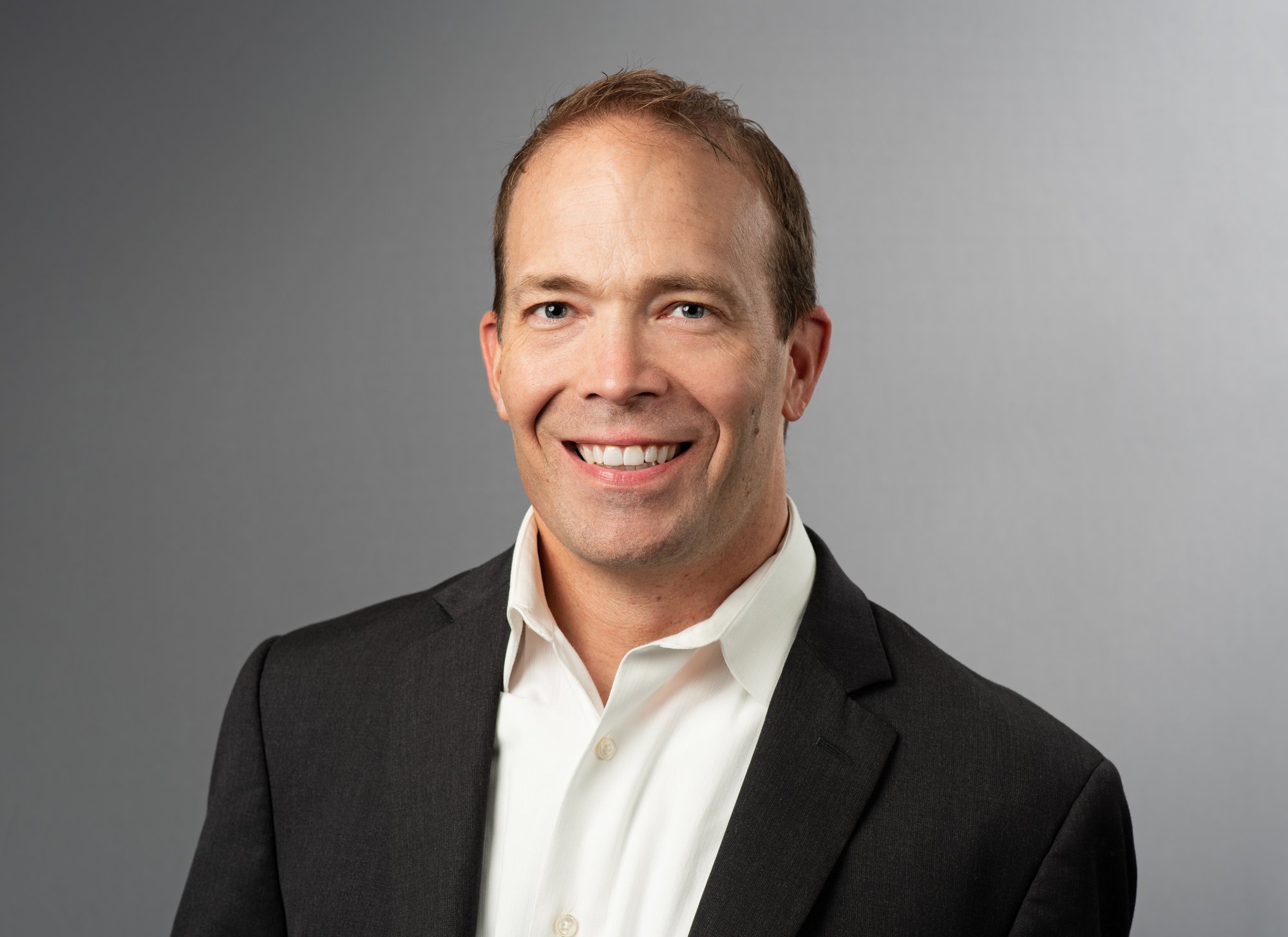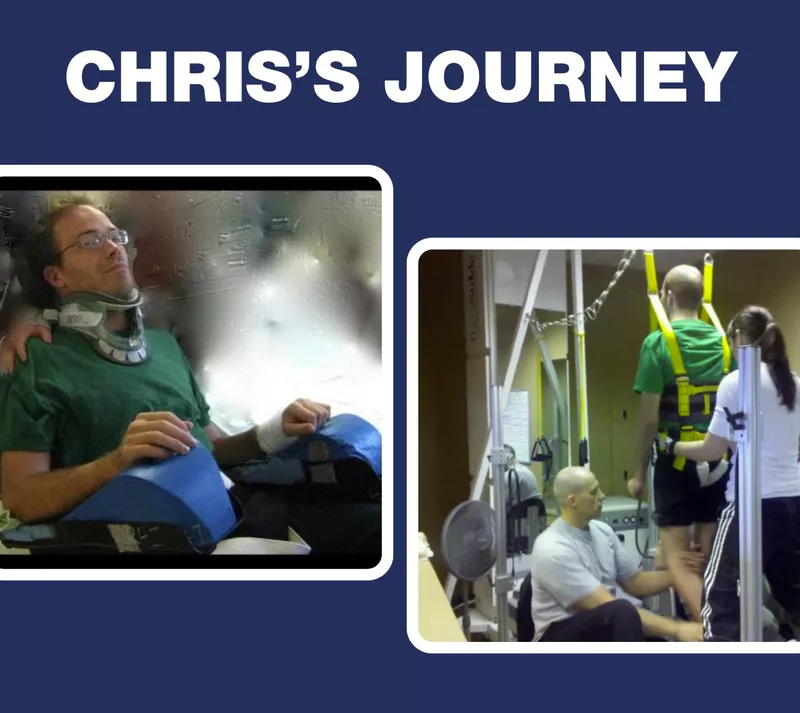In this blog post, we sit down with Chris Leeuw, the founder and executive director of NeuroHope, a non-profit physical therapy clinic and adaptive wellness center in Indianapolis, Indiana. NeuroHope is dedicated to transforming lives by providing access to state-of-the-art rehabilitation technologies at affordable rates. Through this interview, we explore the values and philosophy behind NeuroHope, its impact within the community, and how its care model and innovative technologies address gaps in the traditional rehabilitation model.
Chris Leeuw, Founder of NeuroHope
What’s your organization’s values and philosophy for patient care?
NeuroHope was created because there’s a significant void in rehabilitative care for people with serious injuries. After experiencing a C4 spinal cord injury myself, I saw firsthand how quickly patients are discharged from rehab hospitals despite having the potential for further recovery. Our mission at NeuroHope is to ensure that people overcoming neurologic injuries have adequate access to the best possible resources to maximize their recovery.
Traditional healthcare providers often don’t offer innovative technologies due to high costs and insurance limitations on outpatient visits. At NeuroHope, we aim to provide these advanced technologies affordably. When we first opened, we initially focused on those more acute injuries. Our mission has evolved to also support individuals with chronic injuries through fitness and wellness programs. National statistics show that 1 in 4 people with spinal cord injuries are re-admitted to the hospital every year due to complications from inactivity. Keeping people active and healthy after life-changing injuries is also a critical part of our philosophy.
Tell us more about your community—does it extend beyond Indianapolis?
Our reach extends well beyond the local area. We have physical therapists, occupational therapists, and kinesiologists working together here. We have a unique model that allows for the continuation of care after clinical treatment visits end. Our skilled therapists work closely with kinesiologists that understand neurologic injuries, and who can continue to work with patients individually after outpatient discharge. We also have exercise and group gym memberships that are separate from therapy or personal training sessions Right now, we have about 150 active patients. There is a high demand for our services, we even have a wait list.
Most of our patients come from the Indianapolis area, but some have traveled from as far as California or Ohio.
Your organization is dedicated to maximizing recovery and access to rehabilitation services. Can you explain how your care model works?
The average stay in inpatient rehabilitation is only a few weeks. During this time, families face overwhelming challenges adapting their homes and learning new caregiving skills rather than focusing on recovery. After Inpatient Rehabilitation, most people go to outpatient facilities. Outpatient plans typically allow just 28-30 visits per year—far from sufficient for recovery—and self-pay rates can be prohibitively expensive at $300-$400 per hour.
At NeuroHope we operate like any other outpatient clinic but with key differences: we ensure adequate clinical staffing per patient so patients can get the care they need, and we have a model in place where patients can continue care after insurance visits have been capped. We offer affordable self-pay rates for patients, that range from $65 to $100 per hour. That is 1/4 the cost of self-pay rates at traditional insurance-based centers, if self-pay options are offered. Services including advanced technologies usually cost much more elsewhere.
We fundraise extensively as a nonprofit organization. That allows our programs to be affordable when compared to traditional healthcare providers that charge significantly higher fees.
Do you offer any financial assistance or scholarships for those who can’t afford even these reduced rates?
Yes, we have a special assistance fund for some patients that meet a certain criteria of need.
How do you think rehabilitation technology fits into your care model and values as an organization and as a nonprofit? How do you think having the Lokomat® or any piece of rehabilitation technology fits into your care model?
We are in an exciting time for rehabilitation. There are so many innovative technologies opening the door to maximizing recovery, and it’s critical that patients have access to them. One of our main focuses is providing our therapy team with the best resources to help people in our community. Technology is huge for us.
My goal is to have the most cutting-edge rehabilitation technologies and tools available, and the Lokomat is certainly one of those. We also use neuromuscular electrical stimulation, virtual reality systems, and a body-weight support treadmill system that uses sensory cues amongst other tools. Rehabilitation isn’t a cookie-cutter approach; it’s important to have all the tools available to maximize recovery for people.
A patient tries out the Lokomat at NeuroHope
Has having the Lokomat attracted more attention from the local community or increased referrals? How has it been received?
The response has been very positive from both our existing patients and new ones who hear about this technology and want to try it out. Earlier in recovery, patients can begin training in that neuroplastic window by getting on the robot treadmill and then transition to overground walking.
We’ve also seen the overall therapy benefits for chronically injured individuals who may not be within the initial recovery window. We have seen gains and benefits including improved circulation, bone density maintenance, etc., by getting out of their chairs and moving.
Additionally, we’re conducting a data collection project with the University of Indianapolis where every patient at NeuroHope fills out a survey during each visit regarding their health conditions and hospital readmission rates. We’re gathering data to establish whether using tools like the Lokomat help to keep patients healthier longer-term, even if they’re beyond their initial recovery window. These injuries are lifelong challenges for many people. Having a resource like the Lokomat helps by keeping them active.
You sustained a cervical spinal cord injury at age 28, and this experience inspired you to open NeuroHope. You’re also a member of the Christopher and Dana Reeve Foundation for NeuroRecovery Network. Can you tell me about your injury and personal rehabilitation journey? How did you get here today?
Life changes in an instant. Anyone who has experienced a spinal cord injury will tell you that. In many ways, my story isn’t much different from others who have sustained life-changing injuries. However, I am fortunate because after several years of rehabilitation, I relearned the ability to walk—something many people don’t achieve.
I was 28 years old with friends on a kayaking trip during a hot summer Sunday when we came across a tall bridge. I decided to jump off the bridge feet first into the water below. Someone I didn’t know jumped in right after me and landed on my head. This caused me to snap my neck resulting in a C4 spinal cord injury—it was like someone hit a light switch and paralyzed me from the neck down.
After being airlifted to the hospital and undergoing emergency surgery, the doctors told me there was very little hope of regaining any function ever again. Despite this prognosis, I went through two months of inpatient rehab in a rehabilitation hospital where I started getting bits of functional return back. When I left, I could move my toes and hands slightly due to it being an incomplete spinal cord injury.
Chris begins his inpatient rehab journey
Following this period, I spent another four months in a nursing home. My insurance would only pay for a sip-and-puff wheelchair and no additional rehab— it was a very eye-opening moment regarding our healthcare system’s limitations. At a time when therapy was crucial for me, it felt disheartening.
Through my employer’s support and personal fundraising efforts by friends and family, I began going to Neuroworx in Utah—a place dedicated to long-term rehabilitation founded by a physician who sustained a spinal cord injury and his physical therapist. I traveled across the country to Neuroworx, still in a wheelchair and with my mother as my caregiver. The facility offers innovative technologies like Lokomat, ArmeoSpring, aqua therapy and overground gait training. Most importantly, they introduced me to a model of patient access that changed my recovery, and changed my life. For two years at Neuroworks I attended 2–3 hour daily sessions under their unique model focused on extended care beyond typical outpatient service. I slowly regained independence learning how to walk again.
I returned home inspired by Neuroworx, and determined to create a center with the same model of care in my community. My family and I created NeuroHope in 2013, raised about $80,000 and in 2015 opened by partnering with the University of Indianapolis. They provided a small space, for NeuroHope’s first two therapists to work part-time. We started with launching grassroots fundraisers and gradually expanded over a decade thanks to community and state foundations. We now have a staff of 23 and have helped more than 600 individuals with their neurologic recovery thus far!
What do you think the future looks like for NeuroHope? I hear you’re moving to a new facility. Can you comment on that and share your goals?
We want to continue to grow. We added speech therapy over the summer, and proudly announced a partnership with fellow non-profit “Conquer Paralysis Now”, founded by Sam Schmidt, a former IndyCar driver who shares a similar mission.
In September, we relocated to the newly renovated DRIVEN NeuroRecovery Center to expand services and help more people.
NeuroHope is a game-changer for the community
NeuroHope under Chris Leeuw’s leadership aims to bridge critical gaps within the traditional rehabilitation model by offering long-term comprehensive support equipped with advanced technology solutions tailored specifically towards individual needs, all made possible through innovative funding models. As a part of its mission, NeuroHope ensures that no one gets left behind in their rehabilitation journey due to financial constraints or lack of accessible care.
To learn more about NeuroHope, visit their website here. To learn more about the Lokomat and advanced rehabilitation technologies, visit us at www.hocoma.com.
 Go back to blog
Go back to blog
